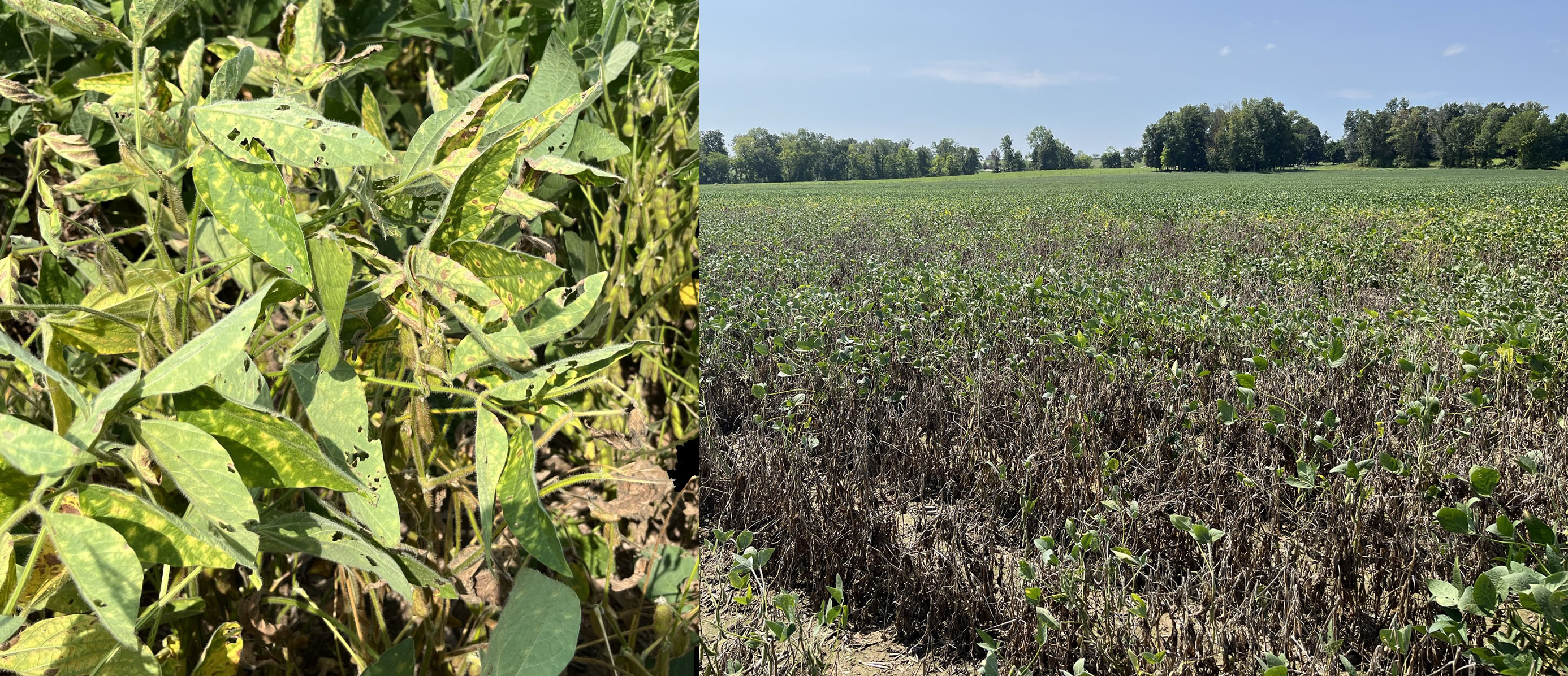Red crown rot: A new threat to soybean production
Red crown rot can be spread through contaminated soil, providing yet another reason to not move soil and to clean equipment when possible.

Red crown rot is caused by the fungal pathogen Calonectria ilicicola, which was first identified in the United States on peanuts in 1965 and is now a prominent pathogen throughout the peanut growing region of the United States. In 1972, C. ilicicola was identified causing red crown rot of soybean for the first time in the United States. Alarmingly, red crown rot appears to be moving into more northern climates with reports of soybean fields with severe disease occurrence and significant yield losses in Indiana, Illinois, Kentucky and Missouri.
Foliar symptoms of red crown rot are like that of sudden death syndrome or brown stem rot, typically presenting during late reproductive growth stages. Small chlorotic (yellow) blotches on leaf tissue will begin to form that will eventually expand into interveinal chlorosis and necrosis (Photo 2). In severe cases wilting, loss of leaves and premature senescence can occur. While not always present, dark red structures (perithecia) and a maroon coloration of the soybean stem at the soil line are indicative of red crown rot (Photo 1).

To date, little is known about why this disease is moving northward and why it is now impacting soybean in these regions. If you suspect red crown rot, be sure to submit a sample to the Michigan State University Plant and Pest Diagnostic Services or contact the Chilvers Lab directly at chilvers@msu.edu to help us keep ahead of this disease in Michigan.
Thank you to the Michigan Soybean Committee for supporting these efforts.
This work is supported by the Crop Protection and Pest Management Program [grant no 2024-70006-43569] from the USDA National Institute of Food and Agriculture. Any opinions, findings, conclusions, or recommendations expressed in this publication are those of the author(s) and do not necessarily reflect the view of the U.S. Department of Agriculture.



 Print
Print Email
Email